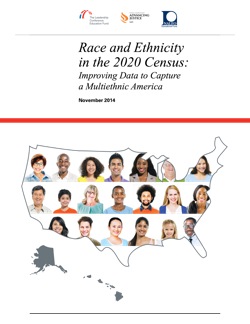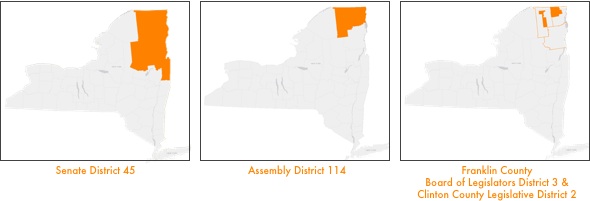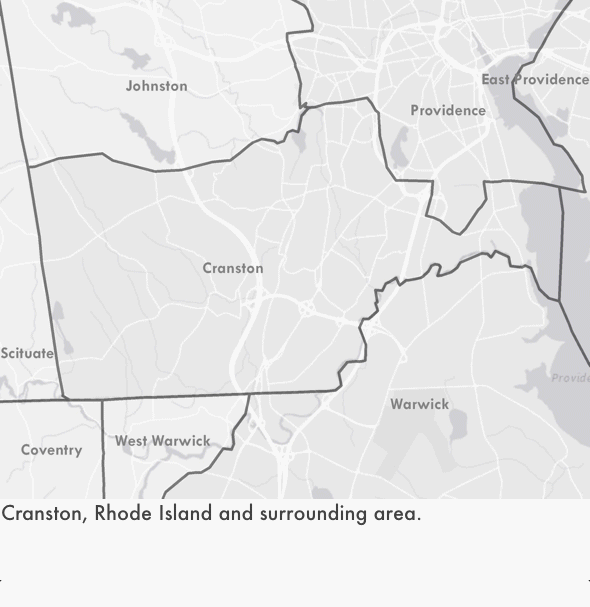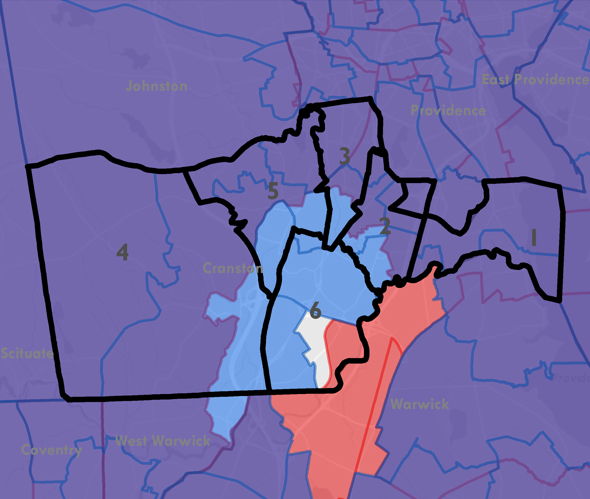New Census Bureau report conveys states' desires to avoid prison gerrymandering
by Aleks Kajstura,
December 22, 2014

The Census Bureau just released this decade’s “view from the states” report. Officially titled Designing P.L. 94-171 Redistricting Data for the Year 2020 Census, the report analyzes how well the Census Bureau’s 2010 redistricting data release served the states, and what changes should be considered for the 2020 Census.
The report conveyed states’ desires to avoid prison gerrymandering and reiterated the Bureau’s commitment to addressing the issue:
…[T]he Census Bureau will get the opportunity to research the feasibility and accuracy of reallocating prison populations to their former residence, following the selection of 2020 Census design.
The Bureau also reiterated the steps it had taken with the 2010 Census to to aid states that wanted to avoid or minimize prison gerrymandering, and spelled out states’ specific requests to continue progress with the 2020 Census:
States applauded the Census Bureau for developing
the Advanced Group Quarters File and making it available so quickly after the release of the 2010 Census (P.L. 94-171) Redistricting Data Summary Files. In the event that selected [group quarters] populations are not reallocated, states have requested the Census Bureau develop a product which will enable states with legislation to remove or reallocate those selected group quarters populations such as military, student, and prisoner populations. States that implemented the reallocation of prisoners have requested that group quarters characteristics be included in the 2020 Census (P.L. 94-171) Redistricting Data Summary File.
Recent report focusing on the Census' methods of collecting and tabulating race and ethnicity data addresses prison gerrymandering.
by Aleks Kajstura,
November 19, 2014
 Prison gerrymandering was one of the issues addressed in a recent report from The Leadership Conference Education Fund, Asian Americans Advancing Justice | AAJC, and the NALEO Educational Fund, Race and Ethnicity in the 2020 Census: Improving Data to Capture a Multiethnic America. The report focuses on the Bureau’s current and proposed methods of collecting and tabulating race and ethnicity data.
Prison gerrymandering was one of the issues addressed in a recent report from The Leadership Conference Education Fund, Asian Americans Advancing Justice | AAJC, and the NALEO Educational Fund, Race and Ethnicity in the 2020 Census: Improving Data to Capture a Multiethnic America. The report focuses on the Bureau’s current and proposed methods of collecting and tabulating race and ethnicity data.
As the Census Bureau moves towards 2020, and is likely to use more administrative records, one of the report’s 17 recommendations calls for the U.S. Office of Management and Budget to lead an effort to improve correctional facilities’ administrative records:
OMB should convene a working group of experts from the Census Bureau, Department of Justice, state correctional departments, prison reform advocates, and other knowledgeable civil rights stakeholders, to evaluate the quality of race and ethnicity data on the incarcerated population and to recommend ways to improve the accuracy, completeness, and consistency of these data.
For more information on the Census Bureau’s data collection practices in correctional facilities, see my analysis of the Bureau’s “Ethnographic Study of the Group Quarters Population in the 2010 Census: Jails and Prisons”.
Next Tuesday will mark the first state-wide election in which people vote from districts that count incarcerated people in the right place: at home.
by Leah Sakala,
October 31, 2014
On Tuesday, prison gerrymandering will dilute election votes cast for state- and local-level candidates across the nation. But, for the first time, Maryland voters won’t have to worry.
This is a big change for Marylanders: in previous state elections, every 4 voters in Delegate District 2B had as much political clout in state affairs as any 5 voters in every other district (see below map). That’s because 18% of the people officially counted in 2B were actually incarcerated people from other parts of the state. Maryland outlawed prison gerrymandering back in 2010 by passing the historic “No Representation Without Population Act.” This law required the state to count incarcerated people at their home addresses in the most recent round of district line-drawing.
Next Tuesday will mark the first state-wide election in which people vote from districts that count incarcerated people in the right place: at home. (And some local Maryland communities, such as Somerset County, are already reaping the benefits of being freed from prison gerrymandering.) Regardless of the outcome of Tuesday’s election, upholding the Supreme Court’s “one person, one vote” mandate is reason to celebrate.

UPDATE: Due to an editing error, a previous version of this article misstated the vote-strength equivalency of an 18% vote-strength enhancement.
Dēmos and Prison Policy Initiative Applaud Senators Rosenberg, Chang-Diaz, and Dorcena Forry and Representatives Moran, Carvalho, and Rushing for Leadership to Protect One Person, One Vote Principle
September 30, 2014
Dēmos and Prison Policy Initiative Applaud Senators Rosenberg, Chang-Diaz, and Dorcena Forry and Representatives Moran, Carvalho, and Rushing for Leadership to Protect One Person, One Vote Principle
On September 12 2014, the Massachusetts legislature sent the United States Census Bureau a resolution adopted by both chambers, calling on the Census Bureau to reform its outdated practice of enumerating incarcerated persons as "residents" of the prisons in which they are temporarily incarcerated. This practice leads state and local governments to violate the constitutional principle of one person, one vote by granting additional undue political clout to voters who live near prisons and diluting the votes cast by everyone else. As the resolution explains:
"Census data results in distortions of the one-person, one-vote principle in drawing electoral districts in Massachusetts, diluting the representation of the majority of districts that do not contain prisons."
Massachusetts’ resolution urges the Census Bureau to provide states with redistricting data that counts incarcerated persons at their residential address.
In response to these developments, Dēmos and the Prison Policy Initiative, non-partisan public policy organizations concerned about fair electoral representation, released the following statement:
"A prison is not a home," said Brenda Wright, Vice President for Legal Strategies at Dēmos. "Prison-based gerrymandering distorts democracy and fair representation in Massachusetts, and should not be tolerated in our state. Dēmos applauds the leadership of Senators Rosenberg, Chang-Diaz, and Dorcena Forry and Representatives Moran, Carvalho, and Rushing in achieving passage of the resolution urging the Census Bureau to count incarcerated persons in their home communities, where they are considered to reside for virtually all legal purposes."
Dēmos and the Prison Policy Initiative have long partnered in the goal of ending prison-based gerrymandering. "The national trend in state and local governments of rejecting prison gerrymandering sends a clear message to the Census Bureau that it’s time to update the residence rules," said Peter Wagner, Executive Director of the Prison Policy Initiative. "I’m proud of the Massachusetts Legislature’s steps to urge the Census Bureau to end prison gerrymandering nationwide 2020."
During the public hearings on redistricting in Massachusetts following the 2010 Census, Dēmos and PPI were among many groups and individuals urging the Massachusetts legislature to add its voice to those of other stakeholders calling for change in how the Census Bureau enumerates incarcerated persons.
The Special Joint Committee on Legislative Redistricting in Massachusetts took note of these concerns in its final report (downloads PDF), devoting about a quarter of the redistricting report to the vote dilution caused by the Census Bureau's decision to tabulate incarcerated people as residents of the prison, and suggesting this resolution as their first key recommendation.
Dēmos and PPI strongly applaud the Massachusetts legislature for its leadership in adopting this recommendation and calling for permanent, nation-wide reform of how incarcerated persons are tabulated in the Census. The Massachusetts Legislature’s resolution sends a strong message that Massachusetts residents, and all U.S. voters, deserve to have a fair say in elections. It’s time for the Census Bureau to do its part.
The full text of the resolution is:
WHEREAS, obtaining an accurate count of the population is so vital to representative democracy that the framers of the United States Constitution addressed the issue of the census and apportionment in the opening paragraphs of the Constitution; and
WHEREAS, the Massachusetts Constitution requires that federal census data be the basis for state redistricting; and
WHEREAS, the Census Bureau currently has a policy of counting incarcerated people at the address of the correctional institution, even though for other legal purposes their home address remains their legal residence; and
WHEREAS, this Census data results in distortions of the one-person, one-vote principle in drawing electoral districts in Massachusetts, diluting the representation of the majority of districts that do not contain prisons;
WHEREAS, the simplest solution to the conflict between federal constitutional requirements of "one person, one vote" and Massachusetts constitutional requirements of using the federal census is for the Census Bureau to publish redistricting data based on the location of an incarcerated person’s residence, not prison location; and
WHEREAS, the Census Bureau has already recognized the demand from states and counties for data that better reflects their actual populations, and has agreed to release data on prison populations to states in time for redistricting, enabling some states to individually adjust the population data used for redistricting; and
WHEREAS, Public Law 94-171 requires the Census Bureau to work with states to provide geographically relevant data and the Census Bureau has been responsive to state’s data needs for the past 3 decades; now therefore be it
RESOLVED, that the Massachusetts General Court hereby urges the Census Bureau, in the next Census and thereafter, to provide states with redistricting data that counts incarcerated persons at their residential address, rather than the address of the correctional institution where they are temporarily located; and be it further
RESOLVED, that a copy of these resolutions be transmitted forthwith by the Clerk of the Senate to the Director of Census Bureau.
####
Census Bureau receives Massachusetts’ resolution urging the Census to tabulate incarcerated people at their home address.
by Aleks Kajstura,
September 12, 2014
 Today, the Massachusetts legislature delivered its joint resolution to Census Bureau Director John H. Thompson.
Today, the Massachusetts legislature delivered its joint resolution to Census Bureau Director John H. Thompson.
The resolution urges the Census Bureau to provide the state with redistricting data that tabulates incarcerated people at their home addresses. By tabulating incarcerated people at their residential addresses, as called for in the resolution, the Bureau would create a national and permanent solution to prison gerrymandering.
Judge Lagueux rules that lawsuit against prison gerrymandering in Cranston Rhode Island may go forward.
September 8, 2014
Cranston, RI Lawsuit Will Move Forward
Providence, RI — Local Cranston residents and the ACLU of Rhode Island won a significant victory today in their fight for equal voting power in City elections when Judge Lagueux of the U.S. District Court for the District of Rhode Island denied a motion to dismiss their one person, one vote lawsuit, allowing their case to move forward.
“I’m thrilled this case is going forward,” said Karen Davidson, lead plaintiff. “As a Cranston resident and taxpayer I’m entitled to equal representation and I will keep fighting for it.”
At issue in the case is the City of Cranston’s choice to count the more than three thousand inmates at the Adult Correctional Institutions (ACI) in a single city ward for the purposes of drawing City Council and School Committee districts. Plaintiffs argue this “prison gerrymandering” is improper because those incarcerated at the ACI are not true constituents of local elected officials, but instead remain residents of their pre-incarceration communities for virtually all legal purposes, including voting.
Due to the questionable counting, persons at the only state-run correctional facility in Rhode Island account for 25% of Ward 6’s total “population.” According to Census Bureau data, without the incarcerated population, Ward 6 has only 10,209 true constituents. Yet those constituents now wield the same political power as the roughly 13,300 constituents in each of the other wards. The lawsuit claims that this dilutes the voting strength and political influence of citizens residing outside of Ward 6, in violation of the Equal Protection requirements of Section 1 of the Fourteenth Amendment to the U.S. Constitution.
Judge Lagueux agreed that this is a viable legal claim, stating that “…the inclusion of the ACI prison population is not advancing the principle of electoral equality because the majority of prisoners…cannot vote, and those who can vote are required by State law to vote by absentee ballot from their pre-incarceration address” and that the incarcerated population’s “inclusion in Ward Six does nothing to advance the principle of representational equality.”
“We’re excited our case is going forward, and we urge the City to correct its prison gerrymandering problem without delay,” said Steven Brown, executive director of the ACLU of Rhode Island. “Unless the City acts promptly, Cranston will conduct the 2014 election under a one-person, three-quarters of a vote regime.”
Cranston residents Karen Davidson, Debbie Flitman, Eugene Perry, and Sylvia Weber have joined the ACLU of Rhode Island as plaintiffs in the case. They are represented in federal court by Demos, the Prison Policy Initiative, and the American Civil Liberties Union.
“This is a big win, because it shows that our legal arguments are valid,” said Adam Lioz of Demos, counsel for the plaintiffs. “We hope the City will fix the problem–but if not, we look forward to proving our case at trial: that persons incarcerated at the ACI aren’t really constituents of local politicians and so shouldn’t be counted at the prison for purposes of representation.”
“Counting people at the ACI as constituents of Ward 6 officials makes no sense,” said Aleks Kajstura of the Prison Policy Initiative. “They can’t use the park or library, attend a City Council meeting, or send their kids to public schools. And, even those who can vote must do so from their actual legal residence, not the prison location.”
“Prison gerrymandering distorts the process and runs counter to the core principle of one person, one vote,” said Sean Young, attorney with the ACLU’s Voting Rights Project. “All Cranston voters should have an equal say in who their elected officials are. When citizens exercise their fundamental right to vote, they expect that their vote will be counted equally, not as if it were only three-fourths of someone else’s vote.”
The case is Davidson et. al. v. City of Cranston. Plaintiffs’ complaint can be found here and their response to Defendant’s motion to dismiss is here. Judge Lagueux’s ruling is here.
Massachusetts legislature urges the Census Bureau to end prison gerrymandering by tabulating incarcerated people at their home address.
by Aleks Kajstura,
August 22, 2014
Today, the Massachusetts legislature passed a bipartisan resolution (SB 309) that “urges the Census Bureau, in the next Census and thereafter, to provide states with redistricting data that counts incarcerated persons at their residential address, rather than the address of the correctional institution where they are temporarily located”.
The resolution will now be delivered to the Director of the Census Bureau.
The entire resolution is worth a read:
Continue reading →
Census Bureau asked to solve prison gerrymandering nationally, save states from each having to adjust Census data on their own.
by Aleks Kajstura,
August 22, 2014
Three U.S. Senators recently wrote a joint letter to the Census Bureau, reiterating that the Census’ current methodology of tabulating incarcerated people as if they were residents of the prison location rather than of their home addresses leads to prison gerrymandering. Noting that the Census Bureau is in the best position to end prison gerrymandering nationally — saving the states from each having to adjust Census data themselves — the Senators asked the Bureau to inform them of the “steps it is taking in the near term” toward counting incarcerated people as residents of their home address.
The Senators’ letter, along with others written to the Census Bureau, can be found on our letters page.
Census Bureau's ethnographic study recommends further research in counting incarcerated populations: suggests improvements to use of administrative data and a look at collection of home addresses.
by Aleks Kajstura,
August 22, 2014
The next decennial census is still 6 years away, but the Census Bureau is already running tests and exploring areas for methodological improvement. As part of this process, the Bureau commissioned and released an ethnographic study of incarcerated populations that analyzed how the Census Bureau could count incarcerated people more efficiently while improving accuracy. Although technically not about tabulating incarcerated people at home, we think this ethnographic study fulfils an important prerequisite to the Bureau’s exploration of counting incarcerated people at their home addresses.
The authors describe how, unlike most Americans who fill out a Census form for themselves or their family, incarcerated people are often counted using facilities’ administrative records. This method is sometimes quicker and easier but often results in less accurate data.
But how well do these records serve Census purposes? Ultimately that is the question the authors sought to answer:
Does the use of administrative records meet the goals of the census of “counting everyone in the right place and the right time”? …As has been asserted repeatedly, administrative rosters in correctional systems meet the first half of the census requirements by counting everyone present in these group quarters on the day the rosters are obtained. They are less successful in meeting the next goal of everyone in the right place”….
…these administrative records are least successful in answering valuable questions about race and ethnicity and home addresses. Addressing these questions will provide specific directions for the planning of Census 2020 in correctional group quarters.
The study presented many examples of the shortcomings of administrative records, for example:
Misalignment between official census categories of race and ethnicity and the administrative rosters resulted in subjective, and often arbitrary, [Census form] completions.
…
While names, birthdays and gender are highly reliable in correctional administrative records, the mismatch between federal labels for race and ethnicity and widely variant labels used in these correctional systems illustrate the need to examine these important categories to improve census coverage.
Given some advanced planning, however, the use of administrative records could be a great time-saver for the Census Bureau (and correctional staff). Relying on administrative data could save the Census Bureau from having to visit each prison individually. Instead, the Bureau could simply have a single contact in a state’s Department of Corrections to gather census data for every facility under their jurisdiction. The authors explain how such an agency-level approach can benefit the Census Bureau:
Investing time in an agency approach presents additional benefits for accuracy and cost-savings. Working closely with agency programmers, preparation for the 2020 Census could result in more consistent definitions of the race and ethnic categories both across the system and with the established census categories. Gaining knowledge of the structure and content of these databases could also result in the development of “census subroutines” in electronic form, eliminating the need to code data from hard copies into census machine-readable forms.
Such an approach would not be appropriate for the over 3,000 county jails, with one exception. The large, urban jails are likely to maintain databases similar to these prisons and could be included in a modified agency approach.
Although technically outside the scope of the inquiry, the authors return to the issue of home addresses several times, recommending that “A separate study of the availability and accuracy of these records would have to be designed and implemented.” A recent report, published after the ethnographic study, by a New York Law School professor Erika L. Wood and Dēmos, Implementing Reform: How Maryland & New York Ended Prison Gerrymandering, tackles some of those questions.
The study also points out the internal dissonance in the way the Census Bureau interprets its residence rules for incarcerated people, especially those in jail:
For example, a person arrested at 11:00 p.m. on March 31 may appear on the roster on April 1 but released back into the community later in the day on April 1 and thus not meet any census definition of residence in the jail.
And as the authors point out, this incongruity also leads to a potential overcount of people incarcerated in jails:
Jails, with a high level of population turnover, may present a challenge as their inmates may be counted in both housing unit and GQ [correctional population] enumerations.
So far in this post I have described the parts of the report that are most relevant to our prison gerrymandering work, but I cannot stress enough the wealth of information found in this report on a wide range of issues relating to the enumeration of incarcerated populations. In addition to identifying a few main problems and making recommendations, the report includes a 10-page detailed documentation of the enumeration process in the facilities under study. These pages (section 4 and its subparts) shed light on the census process from the facilities’ perspective and provide great insight into possible approaches for improving future censuses.
The full report is certainly worth a read, and represents a great foundation for the Census Bureau’s potential progress toward more accurate enumeration of America’s incarcerated populations.
We run the numbers. It's almost everyone.
by Peter Wagner,
August 21, 2014
Prison gerrymandering dilutes your right to vote in every level of government in which it operates, so basically the entire state benefits from reform. And, counter-intuitively, some of the biggest beneficiaries of ending prison gerrymandering are rural people who live near large prisons.
First, let’s take a step back and recall two key facts:
-
Vote enhancement in the district with the largest prison dilutes the votes of the residents of every other district.
Mathematically, the impact of crediting incarcerated people to the prison districts is larger than the impact of not crediting them at home because incarcerated people come from all over the state – albeit often disproportionately from some places rather than others – but the prisons concentrate these incarcerated people to a small number of locations. This creates some vote enhancement in every district that contains a prison, but even most of those districts’ residents get less representation than people in the one district with the largest prison population.
And, the vote enhancement in the prison districts is generally so large that it disadvantages rural communities that neither contain prisons nor send very many people to prison almost as much as the typically urban district that loses the largest number of people to the Census Bureau’s prison miscount. In sum, the biggest harm from prison gerrymandering comes not from the vote dilution in the districts that send the largest numbers of people to prison, rather it comes from the larger vote enhancement in the handful of districts that contain the prisons.
-
The effects of prison gerrymandering are the most dramatic at the state and local levels of government because these districts tend to have the smallest populations.
While a cluster of large prisons typically has a negligible effect on a Congressional district of 700,000 people, the impact of a single 1,000-person prison can be massive in a county commission district of only 1,200 people. District sizes vary, but in general you can think of Congressional districts as generally being the largest, and in order of decreasing typical size, state senate districts, state house districts, county districts, and finally city districts and school boards.
So if prison gerrymandering benefits the residents of a particular district, wouldn’t that mean that every state has hundreds of thousands of people who live in such districts and have a vested interest in protecting their unearned political clout during redistricting? Actually, no.
While there are a lot of people who benefit at the state senate level, many of those same residents see larger harms at the level of the state house and local government districts.
Here are some calculations we ran last fall that illustrate how this works:
When New York was still engaging in prison gerrymandering in 2002, Senate District 45 contained 12,989 people incarcerated in state and federal prisons and was 4.34% incarcerated, giving the residents of that district extra influence in comparison with the 61 other rural, and suburban and urban districts that have no or fewer prisons within their borders. But not all residents of the 45th Senate District benefit from prison gerrymandering equally. Less than half (44%) of the district lived in the 114th Assembly District which was 6.99% incarcerated. The remainder of people who lived in Senate District 45 were in two Assembly districts that contained far fewer prison cells than the 114th.
All three counties in the 114th Assembly District contain prisons, but the vast majority (88%) of the residents of that district live in County Board of Supervisors, County Board of Legislators, or County Legislature districts that do not contain the largest prisons. New York’s decision to outlaw prison gerrymandering ended the resulting vote dilution in one or more levels of government that had been plaguing all but roughly 15,300 people in a state of 19 million. And, of course, all 19 million people benefit when the democratic process improves.

New York Senate District 45, Assembly District 114, and on the third map, Franklin County Board of Legislators District 3/Clinton County Legislature District 2. Essex County is outlined in that map but the Essex County Board of Supervisors district with the largest prison is not pictured because that district is not within Assembly District 114. Note that each of these districts may appear large on the map, but the number of people living in these areas is quite small (and the U.S. Constitution requires us to base districts on population, not land area).
Or, to say it another way, prison gerrymandering is bad for 99.92% of the people living in New York State. And New York isn’t alone. I found the same thing when I analyzed to Rhode Island’s districts. Out of the entire state, only 112 people simultaneously live in the state senate district and the state house district with the largest prison population. Everyone else in the state has their vote diluted in one or both chambers as a result of prison gerrymandering.

This animated illustration overlays a map of all of the Rhode Island Senate districts that do not contain the largest prison populations and a map of the house districts that do not contain the largest prison populations over a map of the Cranston area.
If we superimpose the Cranston City Council Ward map over the map of the state house and state senate districts discussed above, we see that even most ward 6 residents — who dramatically benefit from prison gerrymandering at the city council — have their votes diluted in one chamber of the state legislature:

Only 112 non-incarcerated residents of Cranston Ward 6 who benefit from prison gerrymandering in the city council do not also live in a state house or state senate district where their votes are diluted by prison gerrymandering.
So what portion of Rhode Island will benefit from ending prison gerrymandering? It’s 99.989% of the people. That’s no doubt a large part of why the Rhode Island Senate last session unanimously passed a bill that would end prison gerrymandering in the state. (And why the House hasn’t passed that bill is a discussion for another day.)










